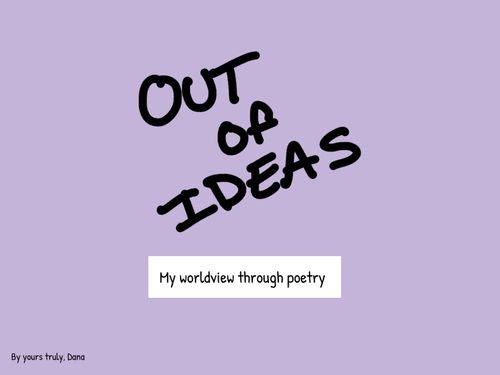Hello and welcome back to another blog post!
Driving question: How might I construct texts that show who I am right now?
Answer: I answered this question through my poetry and through what I learned about my worldview.
For the past few weeks I’ve been working hard on a new project. Poetry! Well, not just poetry but I have definitely written and read a lot of it now. Throughout this project we learned so much new vocabulary and poetry terms. I also learned cool ways to write poetry and how to write poetry about my world view. In this post I will be taking you through the journey that I took to write my very ✨ snazzy ✨ poems.
Right off the bat, we were learning poetry terms. The very first day of this project, we learned what simile and metaphor poems are. We continued to learn more and more poetry terms throughout the project until we had a full set by the end. After we read a few simile and metaphor poems, we were asked to write our own on a whiteboard. Throughout this project, we went up to our whiteboards many times to revise and complete poems. I really liked this because I feel like it was more interactive then just sitting at a desk and aimlessly typing away.
During the first class as well, we learned how to read poetry. There were three steps to properly reading a poem.
1 – Response
First, poetry should be read aloud. Either the teacher will read it or we will ask for a volunteer. Since this is the first time through the poem, you can experience how you wish. You might close your eyes, you might look at the reader, you might follow along on the text of the poem – whatever leads to an authentic experience.
2 – Analysis
Now, read it to yourself – silently. This time, slow down and think. What words do you need to look up? Where are you confused? What stands out to you?
This time in response, make annotations on the text. You are analyzing now:
- Ask yourself the who, what, where, when, whys?
- Consider the writing of the text for structure and language: what poetic terms can you identify?
- How does the writing help build to your response?
3 – Reflection
Now, read it one more time. This might be a group member, a teacher, or just you reading to yourself.
For a final response, think in summary: what is the full impact of the poem and its features?
This was the procedure we would use for reading all poems in class.
In this project, we learned the following terms:
Set One:
1. Simile – Comparing two things using like or as
2. Cliché – A phrase that is overused
3. Rhyme Scheme – The ordered pattern of rhymes at the ends of the lines of a poem or verse
4. Metaphor – Comparing two unlike things
5. Free Verse – A poem that does not have a rhyme or structure
Set Two:
6. Haiku – A Japanese poem of seventeen syllables, in three lines of five, seven, and five, traditionally evoking images of the natural world
7. Juxtaposition – The fact of two things being seen or placed close together with contrasting effect
8. Found Poem – Created from literature that already exists
Set Three:
8. Imagery – Using words to create a mental imagine in the readers head (touch, sight, smell, sound, taste)
- Mood – The feeling a reader gets
- Repetition – Sounds or rhythm, phrases, words, repeat the use of poetic devices, images, meanings
- Alliteration – The repetition of a consonant sound
- Assonance – Repeated vowel sounds
Set Four:
- Onomatopoeia – the way the word is said in relation to the word, sounds as words
- Denotation – the literal dictionary definition
- Connotation – the emotional feeling that the word invokes
Set Five:
- Theme – Life lesson, meaning, moral, or message about life or human nature that is communicated by literary work, not a word, themes are implied
Set Six:
- Personification – the attribution of a personal nature or human characteristics to something nonhuman, or the representation of an abstract quality in human form.
I learned so so sooooo much in this project. I learned how to analyze poems. I learned to read and interpret text and then create something totally new from it. I also learned how to work with other people and collaborate on ideas to come out with the best possible outcome. Furthermore, I learned how to use book creator, an e-book tool that lets you write and publish books (this is not sponsored). I learned how to express myself through my writing in a creative and original way.
Below is my finished e-book with all the poems I wrote in this project ⬇️ In there, I have all of the poems I wrote laid out. They all have complementary pieces of text as well as an audio meaning statement. The complementary pieces of text and the audio recordings connect it to my world view and help you understand them a little more. I put a lot of time and effort in this so I hope you enjoy!

